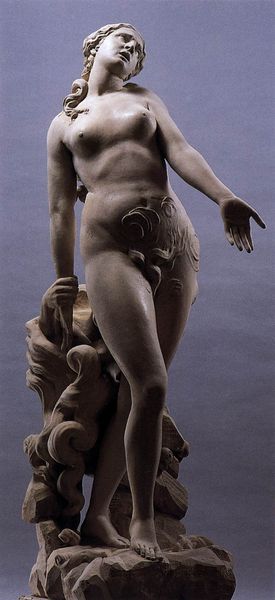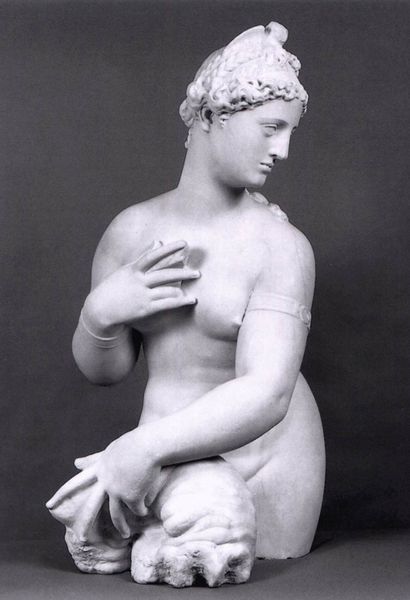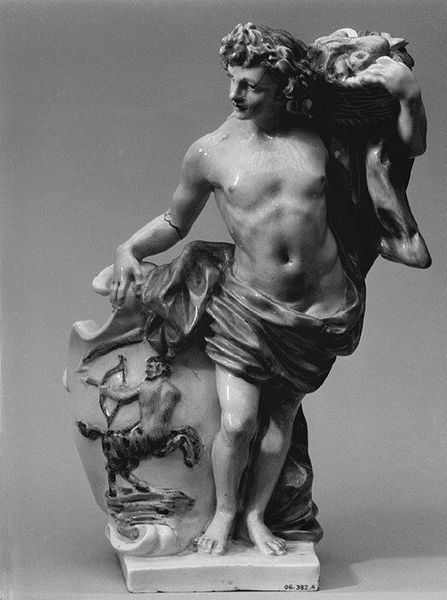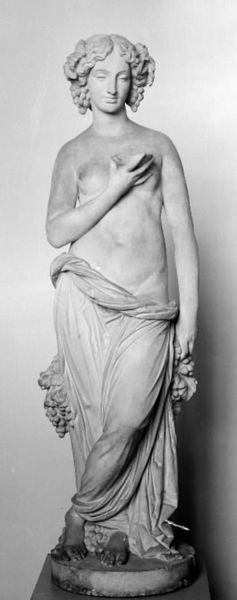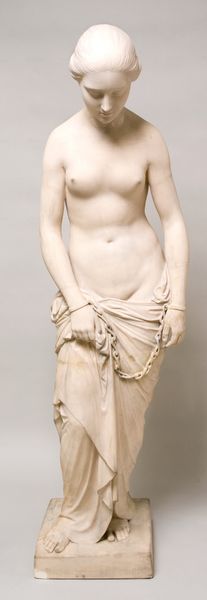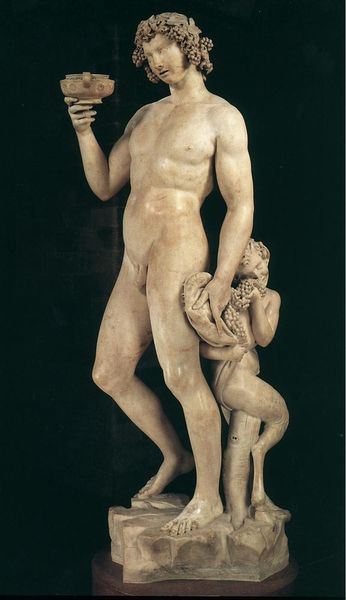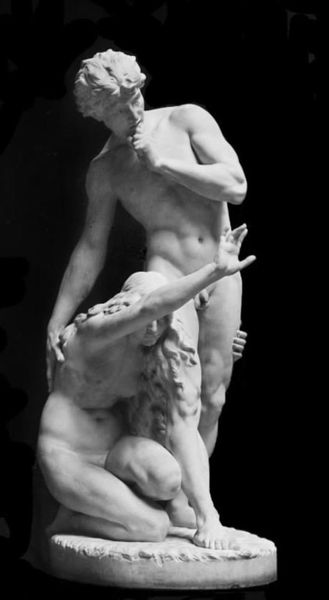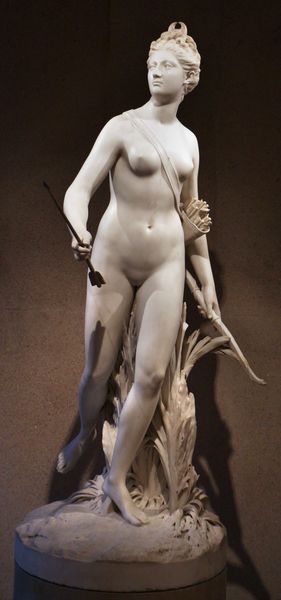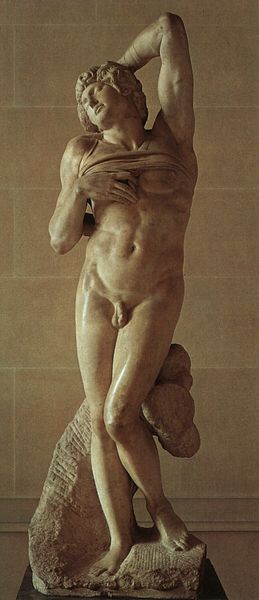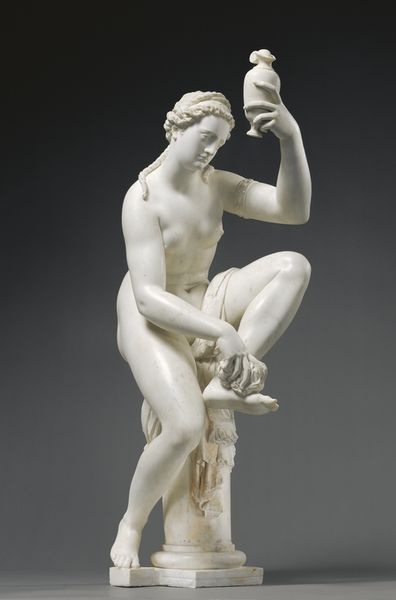
sculpture, marble
#
portrait
#
neoclacissism
#
statue
#
sculpture
#
greek-and-roman-art
#
figuration
#
sculpture
#
marble
#
nude
#
statue
Copyright: Public domain
Curator: Here we see "Orpheus," a sculpture completed in 1776 by Antonio Canova, rendered in exquisitely smooth marble. The piece captures the mythological musician in a moment of profound distress. What's your immediate sense of the work? Editor: Torment. The figure's pose—one hand shielding his eyes, the other outstretched—communicates desperation. There’s an unbearable tension held within that polished stone. Curator: Indeed. Canova masterfully uses the visual language of Neoclassicism to explore the story of Orpheus and Eurydice, particularly the moment Orpheus looks back, losing his beloved to the underworld forever. We can interpret his gesture as a simultaneous shielding from a horrifying reality, and a pleading with the gods. The nudity situates Orpheus firmly in antiquity and perhaps emphasizes vulnerability, but it also links the figure to broader discussions around male ideals and desires, specifically his own for a woman who can’t exist in this realm. Editor: The laurel wreath he wears, usually a symbol of triumph, becomes almost ironic here. Orpheus was gifted with such incredible musical talent; he charmed beasts and moved stones. But even such power couldn't subvert the dictates of death or fate. The tree trunk functions, in part, as the Classical “attribute”—the symbol of recognition. Yet in terms of psychology, trees frequently represent roots, both for stability and potentially painful hidden depths. I feel a subtle anxiety around his reliance on that symbolic feature for physical balance. Curator: I agree. There's an interesting gendered aspect here as well. Classical narratives often placed the blame on Eurydice—as being too attached or clingy; perhaps that is represented here with the physical dependence on the solid “natural” feature of the base that can itself be a signal of gender imbalance or patriarchal social structures. The texture also juxtaposes quite sharply with the smoothness of Orpheus' skin. Editor: And consider the whiteness of the marble. In one way, this gives him an angelic feel, but could we not read that also as palor…death-like? He is becoming fixed and immobile in this moment, an artifact like any sculpture? Curator: Yes, the marble's stillness, then, also becomes a chilling metaphor for his enduring grief—eternally reliving that fatal glance. This interpretation opens space to consider issues of masculine grief and representation. Editor: Ultimately, Canova offers us not just a mythological figure, but a resonant meditation on loss and the human condition, rendered in compelling symbolism. Curator: A figure tragically frozen in transition. A perfect encapsulation of Canova’s engagement with antiquity.
Comments
No comments
Be the first to comment and join the conversation on the ultimate creative platform.
